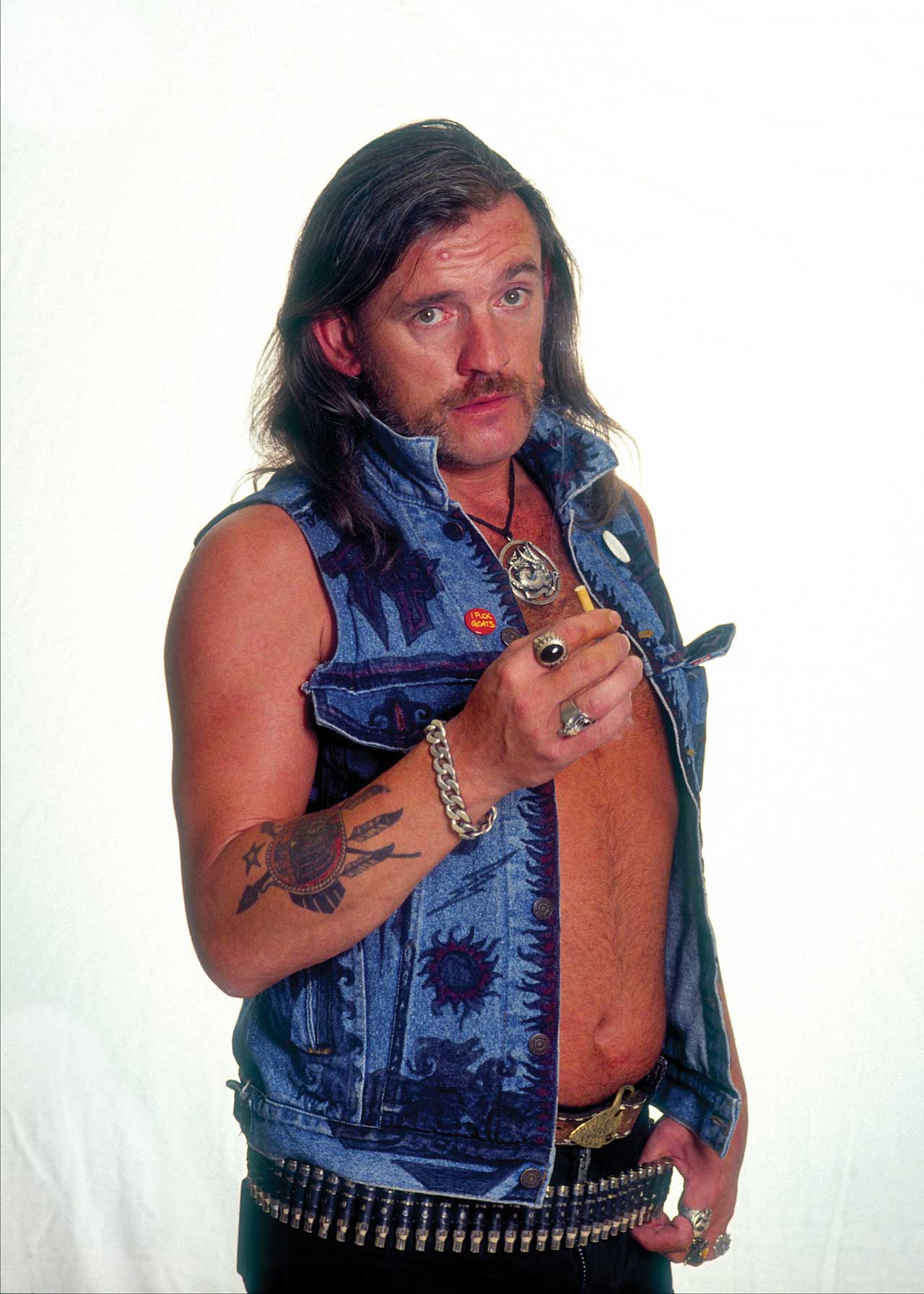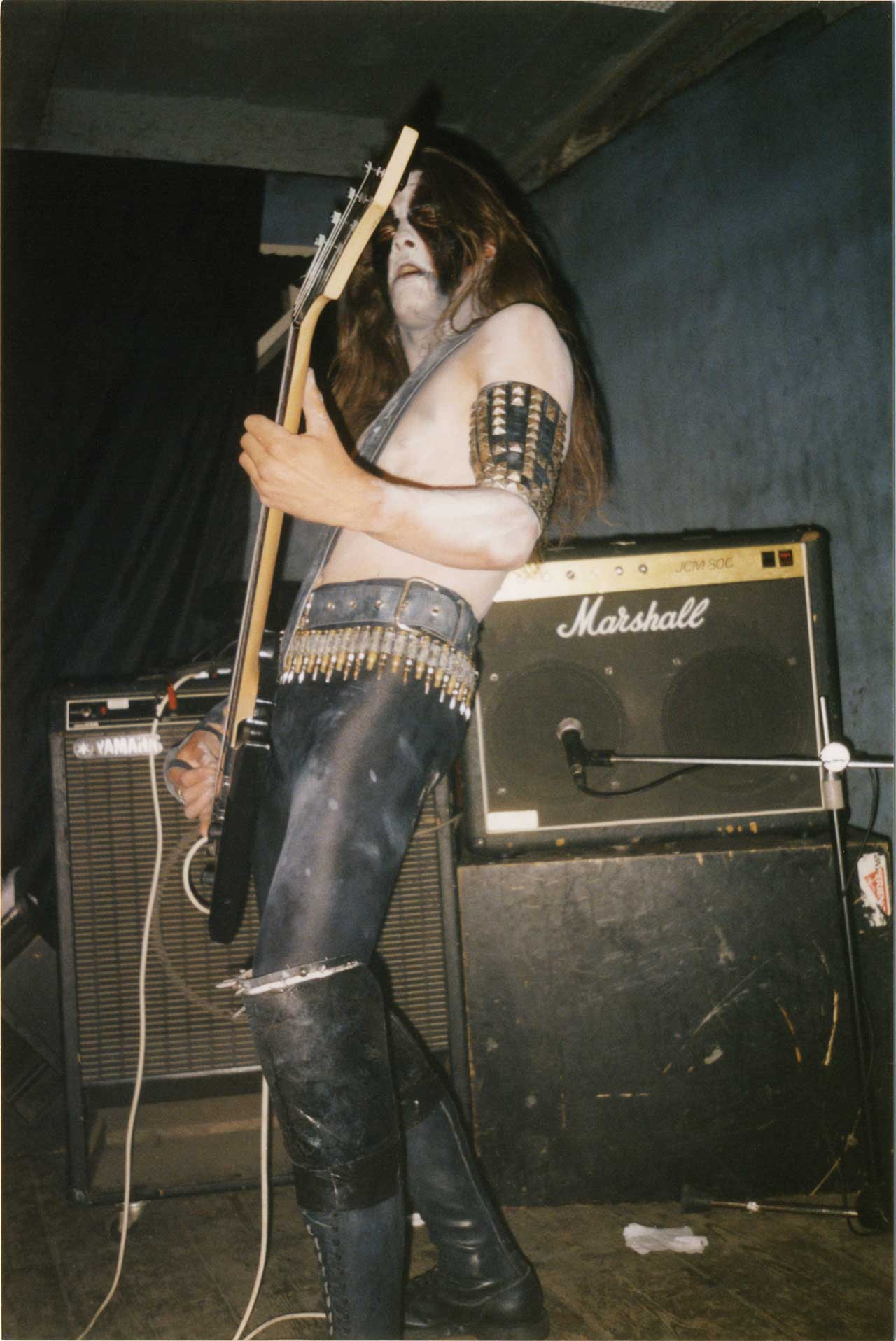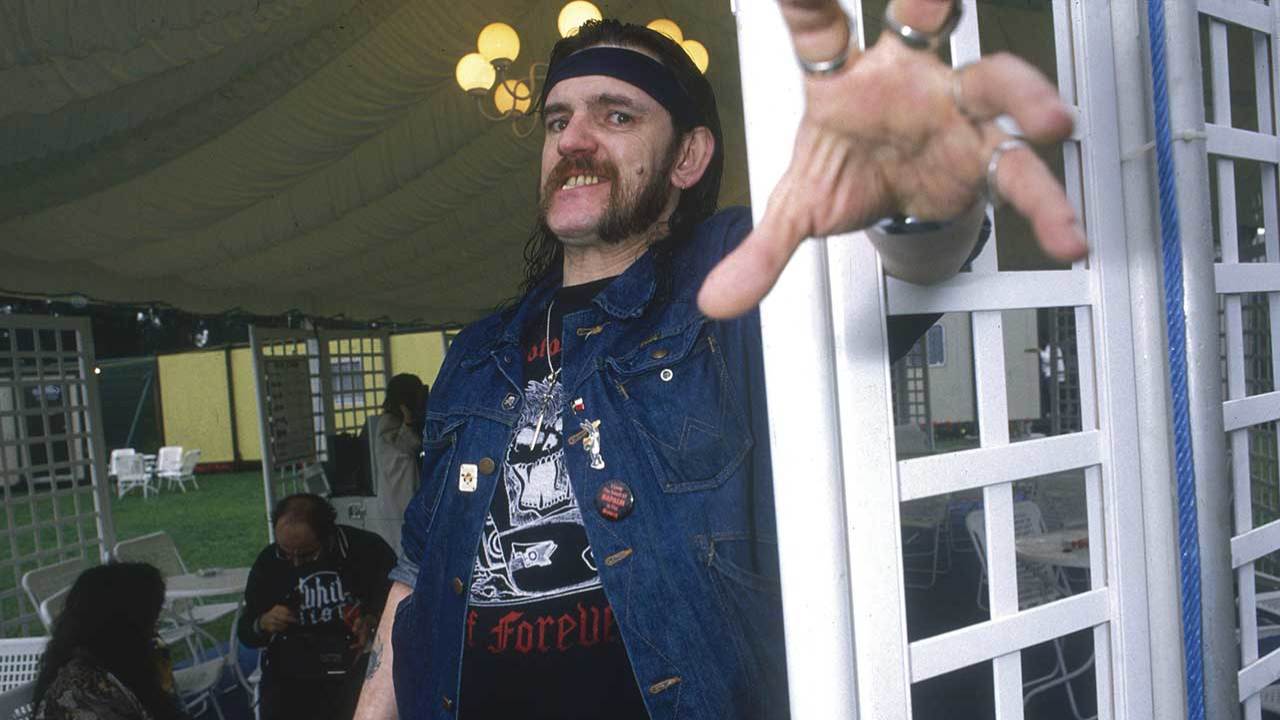Fenriz, Tom G Fischer, Abbath, Satyr and more pay tribute to a founding father.
“I got the message that Lemmy died and that whole day my life and memories of Motörhead slowly passed me by, like they say happens with your own life when you die. Of course, no one was shocked he died, but I think a lot of people were sadder than they expected to be.” – Fenriz, Darkthrone
“Motörhead are the godfathers of extreme metal, that is the simple truth. I really don’t know what else to say. I wish I could be as funny, sarcastic and intellectual a person with the same songwriting skills as Lemmy. Nobody is, there was only one.” – Mika Luttinen, Impaled Nazarene
“I still haven’t realised that Lemmy’s gone, you know? I expected him to last for at least another 10 years. He was that guy, unique.” – Abbath, Norwegian black metal veteran and member of Motörhead covers band Bömbers.
It is already clear from the abundance of tributes made since his passing that the death of Lemmy Kilmister has affected those in the extreme metal world profoundly – more profoundly in fact than most would have expected. Yet it should really come as no surprise to see widespread sadness being exhibited by artists from the worlds of crust, thrash, death and black metal – it was, after all, Lemmy and Motörhead that helped create those very genres.
A big claim? Well yes, it is. But it’s also true. Look back at the state of rock and heavy metal prior to the emergence of Motörhead in the late 70s and it becomes clear just how much the band really changed things. It wasn’t a lone effort of course; during the 70s Motörhead took heavy blues rock toward its darker, heavier conclusion as part of a sacred triumvirate completed by Black Sabbath and Judas Priest. But while Sabbath and Priest brought darkness and finesse to the metal formula, it was Motörhead who first inserted the genuine sense of aggression, attitude and rawness that would define extreme music in the decades that followed. The result was a sound that appealed as much to the punks as it did metal fans.
“I first discovered Motörhead on an old cassette in 1977,” recalls Tezz of crust/ hardcore punk pioneers Discharge. “I was blown away; I kept playing it over and over. They were, and still are, a massive influence on me. As the drummer in Discharge I was influenced by several drummers, but definitely Philthy ‘Animal’ Taylor inspired me the most with his speed and technique. The band turned the ‘punk scene’ upside down and cleared the way for bands like us.”
“I had already been listening to a lot of Sabbath but this was where the two worlds of punk and metal really collided,” concurs Rob Miller of Amebix, another seminal crust band. “There was no dissent, Motörhead were ‘one of us’. One of very, very few bands that filled the no-man’s- land between the two genres and, almost like a ruptured disc in the spine, the two inevitably had to fuse into one another.”
As Rob suggests, those aggressive, pummelling songs pushed both punk and heavy metal into more violent territories, blurring the lines between the two genres in the process. Indeed, in the early 80s the difference between metal and hardcore punk often had as much to do with lyrics and haircuts as anything else. Venom, Bathory and Metallica or Amebix, GBH and Discharge; everyone was becoming noisier, faster and heavier, and it speaks volumes about Motörhead’s indiscriminatory impact that they represented the common thread in every case.
“They were the band that started the crossover between metal and punk,” agrees Michel ‘Away’ Langevin, drummer of progressive thrashers Voivod. “In terms of metal they stayed away from the Dungeons & Dragons subject and were very street- oriented and that’s why they appealed to a lot of scenes. You would see a member of GBH wearing a Motörhead shirt and this eventually turned into thrash metal.”
Everyone in Watain would relate to things through Lemmy’s way of life
“I don’t think thrash metal would be here without Motörhead,” concurs Nige Rockett of Onslaught, another band blending hardcore and thrash. “I first heard them in 1977 and heavy rock was kind of frowned on by the people we were hanging out with but they just seemed to blend the lot. It was heavier than the punk stuff but still had the attitude, energy and rawness of punk; the dirtiness of the bass and Lemmy’s voice.”
“I was already a fan of AC/DC and Judas Priest, but this was a step forward into heaviness,” adds Away. “Philthy became my favourite drummer immediately and I was crushed when I heard of his passing. When we formed Voivod everybody’s favourite band was Motörhead; the bass, the vocals and my drums were a clone of Motörhead. We pretty much covered every song by the band before we started writing our own material so alongside Venom they were the most influential band for Voivod.”
It’s actually hard to find any of the mid-80s metal pioneers that didn’t take their cues directly from Motörhead. Tom Gabriel Fischer of Hellhammer, and later Celtic Frost, is another notable example, and for him discovering the band would prove a pivotal moment in both his music and his life.

“For us Motörhead was a confirmation of something we were looking for, an ever heavier form of hard rock,” he explains. “There was no other band that had that impact, that violence in their music, the brutality, but it was always done with groove and style and it wasn’t primitive – or at least there was a certain charm in the primitiveness.
“They took some of the do-it-yourself style of the punk bands,” he continues. “All the hard rock bands of the time were really accomplished and had singers with multi- octave voices and that made it very difficult for young musicians to enter that field, much less compete with it. Motörhead really opened the doors not just to Hellhammer, but to many other bands and made us think maybe we too could express our rage, our frustration. I don’t think Venom would have happened without Motörhead, Hellhammer wouldn’t have happened without Venom, so all this set in motion so many things. Phil Taylor was also hugely influential in our own development, to the extent that we tried to get him into Celtic Frost in 1985.”
The influence of Motörhead stretches far beyond the early 80s and still reverberates in many young bands today, even if some aren’t aware of it. Perhaps most significant has been the specifics of the band’s rhythm section, with both distorted bass guitar and an extensive use of double bass drumming, the latter forming the foundation of much of the music we hold dear today and largely popularised by records such as Overkill.
“The drums!” exclaims Abbath. “The drums, the vocals and yeah, is that a bass? Fucking hell, ‘guitar bass’! Apparently Philthy was sitting in the studio before Lemmy and Eddie came in, he had two bass drums and was going ‘duggadugga-dugga-dugga-dugga’ and then ‘duga-dag-duga-dag’ and then Lemmy comes in and he says, ‘Don’t stop, continue!’ and then they plugged in and they made the whole song on that fucking rehearsal. That’s my favourite Motörhead album, it’s definitely the coolest song.”
“I was at my half-cousin’s,” recalls Fenriz, who was soon to become a drummer himself, “and he had a drumkit – I didn’t have a kit before ’84, ’85. He put on the album No Sleep ’Til Hammersmith and I started playing along, so that was the album I first started playing to. That certainly raised the awareness of Motörhead for me, but it wasn’t until late ’89, ’90 that I really started listening to Motörhead, together with the other guys from Darkthrone. It influenced us – we have a track called In The Shadow Of The Horns, and that was the first time we brought a direct Motörhead influence into things.”
Another important black metal drummer, Mayhem’s Hellhammer, has himself become famous for his double bass work and hails Motörhead as an early influence.
“I immediately dug Philthy’s way of playing,” he says. “You know this raw, punk-esque playing with a lot of fast eight notes on the hi hat, à la Marky Ramone for instance. His actual drum setup was another thing I really liked and got inspired by. Usually the metal double bass setup consisted of four toms in a row – boring and predictable, really. Philthy got three! I thought it was super-cool instead of the boring four toms or fashionable two-tom glam style.”
As well as their sometimes-overlooked technical innovations, there was a surprising depth and maturity in the band’s seemingly straightforward songs that helped keep them relevant to their dedicated fans as they grew older and which perhaps partly explains their incredible longevity.
“What seemed to be a weakness at first – with the fact that he was 30 years old in what seemed to be a typical adolescent band – that became a strength later,” ponders Fenriz, “When all the adolescents grew up they understood, ‘This shit is still valid, it’s not something we just listened to when we are teenagers that couldn’t stand the test of time’. Usually you’re writing your way into music history when you’re 17, 18 up to 22. He was older and so had different things to lay on lyrically.”
“Over the years my deep love for Motörhead matured like some kind of fine wine,” confirms Alan Averill of Primordial. “Despite being a straight up rock’n’roll band there’s never been a gimmick or anything showy, but also there’s a subtlety and sense of history to Motörhead that maybe gets lost on a very young mind. I would say strangely enough they have had more influence over me over the last 10 or 15 years as I’ve returned to them.”
Of course, while Lemmy and Motörhead are sadly no more, their music – and musical legacy – certainly lives on. Perhaps most impressive of all is the tremendous variety of artists in whom the influence of this timeless music – and perhaps even more, the attitude of the larger-than-life personality behind the band – continues to manifest. One such example is Ivar Bjørnson of Enslaved, a band one might not immediately compare to Motörhead yet who are directly influenced by them.

“Lemmy’s music and style has influenced us from day one,” he confirms, “and we still always have at least one part of each new album that is referred to as the ‘Motörhead part’. Let’s not forget Hawkwind either! They were also a very important to what Enslaved has become. Then there are our other main influences, who are also heavily influenced by Lemmy and co; Just listen to early Bathory, or 80s Celtic Frost. Lemmy is everywhere! There’s something intangible and almost esoteric about the attitude behind it all, both the sound and the larger- than-life-personality that was Lemmy. A total freedom from restrictions and inhibitions, and an ecstatic sonic drive that is primal, powerful and somewhat sexual in nature. To not be influenced musically and personally would be absolute madness.”
“I’m grateful for all the great music he’s written, the many times I’ve seen him perform and all the inspiration he’s given us,” says Erik Danielsson of Watain. “There were definitely things about Lemmy’s way of life that everyone in Watain would relate to. Compared to most of his contemporaries he was always the ‘real bad guy’, which is a reputation you get if you do things your own way, all the way!”
“He was first and foremost a formidable artist,” concludes Satyricon’s Satyr, “and we will never see the likes of him again in our lifetime. Let’s remember him for his musical contributions more so than how many girls he shagged or how much he would drink every day. He wrote some of the very best songs out there for decades. Add to that how known he was for being a good man. Gene Simmons put it well by saying he was unassuming, non-judgmental and with a heart of gold. That makes Lemmy a role model to all of us.”
Bröthers In Arms
Three notable covers from the heavier end of the musical spectrum
Onslaught’s 2010 cover of Bomber came complete with guest appearances by both Phil Campbell and Tom Angelripper of Sodom. No strangers to the band, Onslaught in fact toured for a month with Lemmy and the boys after the release of their biggest album, The Force. “Every night Phil would introduce us to the crowd,” recalls guitarist Nige Rockett. “They were such friendly, helpful guys. It was the biggest highlight of our career, definitely.”
Perhaps Motörhead’s darkest, heaviest and most foreboding song, Orgasmatron is an obvious choice of cover for any extreme metal band and has been tackled by Sepultura, Nargaroth and Merrimack to name but a few. Satyricon’s cover is particularly notable for its apocalyptic overtones as well as Satyr’s ‘black metal Lemmy’ photo on the sleeve of the Megiddo EP on which it appears. “That song was to me a bridge between what they and we do,” comments Satyr, “I still consider it one of Motörhead’s defining songs.”
Covering Motörhead’s most famous song is a task that has been undertaken by many, to sometimes pointless effect. Perhaps realising the lack of sense in covering the anthem straight, Quorthon reimagined the song as a mid-paced Viking metal epic. The result is not only an enjoyable listen but an interesting pointer to the link between these two hugely influential acts.
